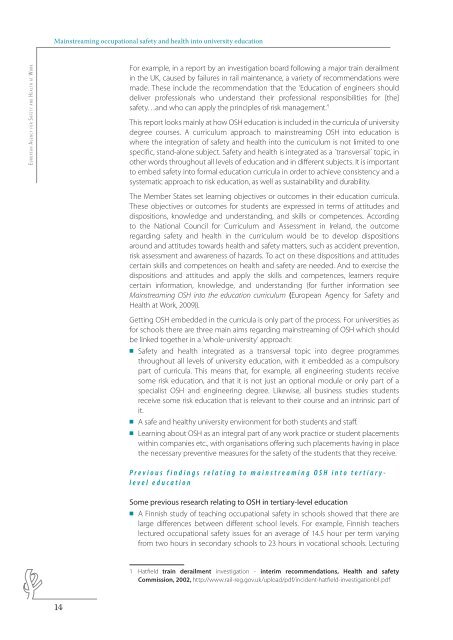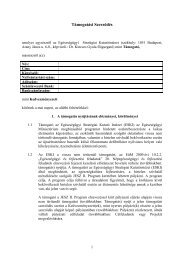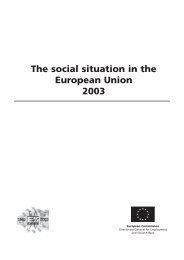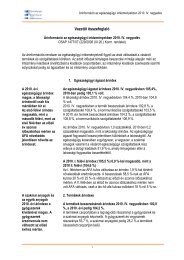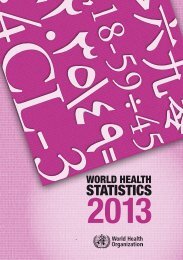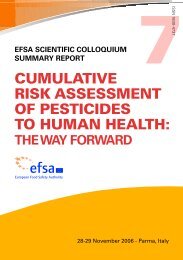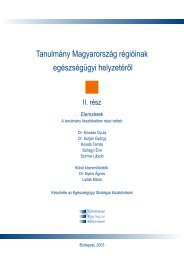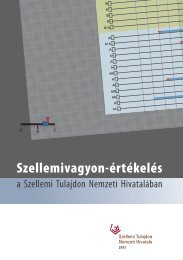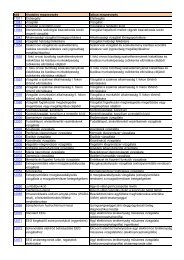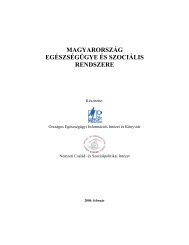Mainstreaming occupational safety and health into university ...
Mainstreaming occupational safety and health into university ...
Mainstreaming occupational safety and health into university ...
Create successful ePaper yourself
Turn your PDF publications into a flip-book with our unique Google optimized e-Paper software.
<strong>Mainstreaming</strong> <strong>occupational</strong> <strong>safety</strong> <strong>and</strong> <strong>health</strong> <strong>into</strong> <strong>university</strong> educationE u r o p e a n Ag e n c y f o r Sa f e t y a n d He a l t h a t Wo r kFor example, in a report by an investigation board following a major train derailmentin the UK, caused by failures in rail maintenance, a variety of recommendations weremade. These include the recommendation that the ‘Education of engineers shoulddeliver professionals who underst<strong>and</strong> their professional responsibilities for [the]<strong>safety</strong>…<strong>and</strong> who can apply the principles of risk management.’ 1This report looks mainly at how OSH education is included in the curricula of <strong>university</strong>degree courses. A curriculum approach to mainstreaming OSH <strong>into</strong> education iswhere the integration of <strong>safety</strong> <strong>and</strong> <strong>health</strong> <strong>into</strong> the curriculum is not limited to onespecific, st<strong>and</strong>-alone subject. Safety <strong>and</strong> <strong>health</strong> is integrated as a ´transversal´ topic, inother words throughout all levels of education <strong>and</strong> in different subjects. It is importantto embed <strong>safety</strong> <strong>into</strong> formal education curricula in order to achieve consistency <strong>and</strong> asystematic approach to risk education, as well as sustainability <strong>and</strong> durability.The Member States set learning objectives or outcomes in their education curricula.These objectives or outcomes for students are expressed in terms of attitudes <strong>and</strong>dispositions, knowledge <strong>and</strong> underst<strong>and</strong>ing, <strong>and</strong> skills or competences. Accordingto the National Council for Curriculum <strong>and</strong> Assessment in Irel<strong>and</strong>, the outcomeregarding <strong>safety</strong> <strong>and</strong> <strong>health</strong> in the curriculum would be to develop dispositionsaround <strong>and</strong> attitudes towards <strong>health</strong> <strong>and</strong> <strong>safety</strong> matters, such as accident prevention,risk assessment <strong>and</strong> awareness of hazards. To act on these dispositions <strong>and</strong> attitudescertain skills <strong>and</strong> competences on <strong>health</strong> <strong>and</strong> <strong>safety</strong> are needed. And to exercise thedispositions <strong>and</strong> attitudes <strong>and</strong> apply the skills <strong>and</strong> competences, learners requirecertain information, knowledge, <strong>and</strong> underst<strong>and</strong>ing (for further information see<strong>Mainstreaming</strong> OSH <strong>into</strong> the education curriculum (European Agency for Safety <strong>and</strong>Health at Work, 2009)).Getting OSH embedded in the curricula is only part of the process. For universities asfor schools there are three main aims regarding mainstreaming of OSH which shouldbe linked together in a ‘whole-<strong>university</strong>’ approach:OO Safety <strong>and</strong> <strong>health</strong> integrated as a transversal topic <strong>into</strong> degree programmesthroughout all levels of <strong>university</strong> education, with it embedded as a compulsorypart of curricula. This means that, for example, all engineering students receivesome risk education, <strong>and</strong> that it is not just an optional module or only part of aspecialist OSH <strong>and</strong> engineering degree. Likewise, all business studies studentsreceive some risk education that is relevant to their course <strong>and</strong> an intrinsic part ofit.OO A safe <strong>and</strong> <strong>health</strong>y <strong>university</strong> environment for both students <strong>and</strong> staff.OO Learning about OSH as an integral part of any work practice or student placementswithin companies etc., with organisations offering such placements having in placethe necessary preventive measures for the <strong>safety</strong> of the students that they receive.Previous findings relating to mainstreaming OSH <strong>into</strong> tertiaryleveleducationSome previous research relating to OSH in tertiary-level educationOO A Finnish study of teaching <strong>occupational</strong> <strong>safety</strong> in schools showed that there arelarge differences between different school levels. For example, Finnish teacherslectured <strong>occupational</strong> <strong>safety</strong> issues for an average of 14.5 hour per term varyingfrom two hours in secondary schools to 23 hours in vocational schools. Lecturing1 Hatfield train derailment investigation - interim recommendations, Health <strong>and</strong> <strong>safety</strong>Commission, 2002, http://www.rail-reg.gov.uk/upload/pdf/incident-hatfield-investigationb1.pdf14


